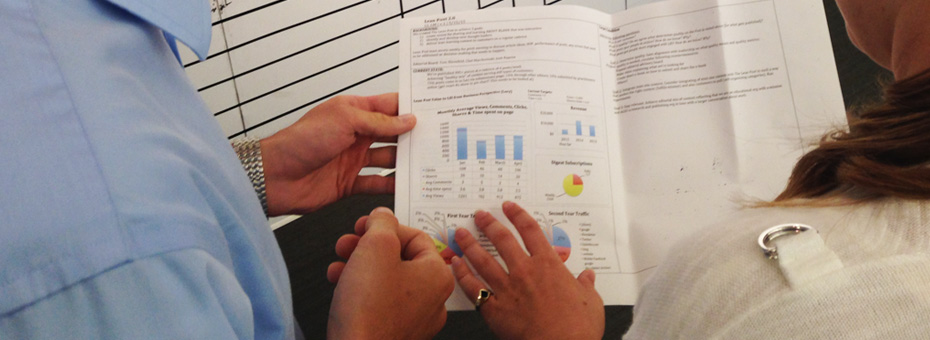While Lean promises robust solutions to the most pressing of problems, it’s core promise offers something even more enduring: the organizational capacity to frame and face problems in a dynamic manner. Beyond the rewards of quick fixes, the best organizations discover that disciplined lean practice helps develop a capacity to explore, learn, and indeed, solve problems by everyone.
That’s why lean thinkers always stress the importance of focusing on the process of tackling problems over the gains of any one-time solution–to be vigilant about mindfully developing healthy habits with each turn of the cycle. Tracey Richardson shares a handful of key questions in support of this approach in Are You Having Problems with Your Problem-Solving?:
- Does every individual in your organization understand the Purpose of their work?
- Is everyone utilizing the power of the Gemba?
- Are you digging down to find root cause?
- Are you measuring in specific performance terms?
- Are you doing this everyday with everything you do?
She counsels people to replace kaizen “blitzes” (episodic events that frame problem-solving as something done on special occasions) with sustained daily efforts that become ingrained as healthy habits. “No labels, make it a way of business,” she says. This anchors the work in daily details, and guides improvers toward tangible targets.
Sustained lean practice inevitably focuses people on the specific details of any gap to be closed, say Jim Luckman and David Verble. In How a Problem-Solving Culture Takes Root, they advise people to “grasp the actual conditions of problem situations,” a principle that prevents people from jumping to conclusions with predetermined fixes.
While this may appear to be plain old common sense, they explain how this core principle grounds problem-solvers in a humble and open approach: “Rather than assume you know enough about the nature of a problem situation, go to the gemba (wherever the work processes are) and try to understand the sources of performance problems yourself. Look for and ask about the problems, often caused by variation in the way the work is being done.”
Indeed, starting with a commitment to the actual problems subsequently colors how you will interact with the people touching this problem. It will lead you to show respect for what your employees know, think, feel, and can do, they say; and drive you to ask open-ended questions in the spirit of inquiry as opposed to advocacy. It will also lead you to, per their advice, “pay attention to how employees talk to you (and each other) about problems.”
Following such a formal problem-solving process invariably develops teamwork, says John Shook, who has written often about the value of applying A3 thinking to challenges large and small. His terrific book Managing to Learn shares the iterative value of exposing how one person tackles a problem, emphasizing the mutual discovery of manager and managee as they address a focused (indeed, an increasingly narrow) problem.
In The A3 Process—Discovery at Toyota and What it Can Do For You, Shook talks about his experience that inspired the book, noting how one simple episode from his time at Toyota provided a scaffolding for a simple challenge that has helped illuminate the larger purpose of a PDCA-oriented leadership style:
“Where’s the damned file?” was a simple problem, but the value of the Process extended far beyond its face value of enabling us to find files faster. Education and learning were embedded in the Process of working on the A3 (the improvement project) itself. It exemplified learning through doing at its best. The more A3s I wrote, the better I became at the thought Process. Internalizing the thinking is the objective, not technical mastery of the format. The more cycles of reflection and learning that can be experienced, the better it is for the individual and for the organization.
The most fundamental use of the A3 is as a simple problem-solving tool. But the underlying principles and practices can be applied in any organizational settings. Given that the first use of the A3 as a tool is to standardize a methodology to understand and respond to problems, A3s encourage root cause analysis, reveal processes, and represent goals and action plans in a format that triggers conversation and learning. A good A3 has sound problem-solving — science — embedded inside, but it achieves much more, exemplifying this great quote by a great scientist:
“Science is built of facts the way a house is built of bricks, but an accumulation of facts is no more science than a pile of bricks is a house.” – Henri Poincaré
In exactly the same way, a good A3 is more than a collection of data that solves a problem — it tells a story that can coalesce an organization.
This generative quality of mutual problem-solving is highlighted in two recent Posts by John Shook and Isao Yoshino tracing the Kanri Noryoku Program (Kan-Pro) at Toyota. Tackling any problem was always linked to the eternal challenge of developing proficient managers who would learn through leading, and lead through learning (a reference to Katie Anderson’s new book on this topic.)
The two remind us once more of the need to lead mindfully, always open to the process of learning and developing while pursuing specific results: “One of the hallmarks of a successfully executed A3 process is that it is a collaborative activity (“it takes 2 to A3”), a learning process for everyone involved. For learner and teacher, senpai and kohai, sensei and deshi. The A3 paper is simply a convenience, a job aid to facilitate structured discovery.”
Virtual Lean Learning Experience (VLX)
A continuing education service offering the latest in lean leadership and management.





